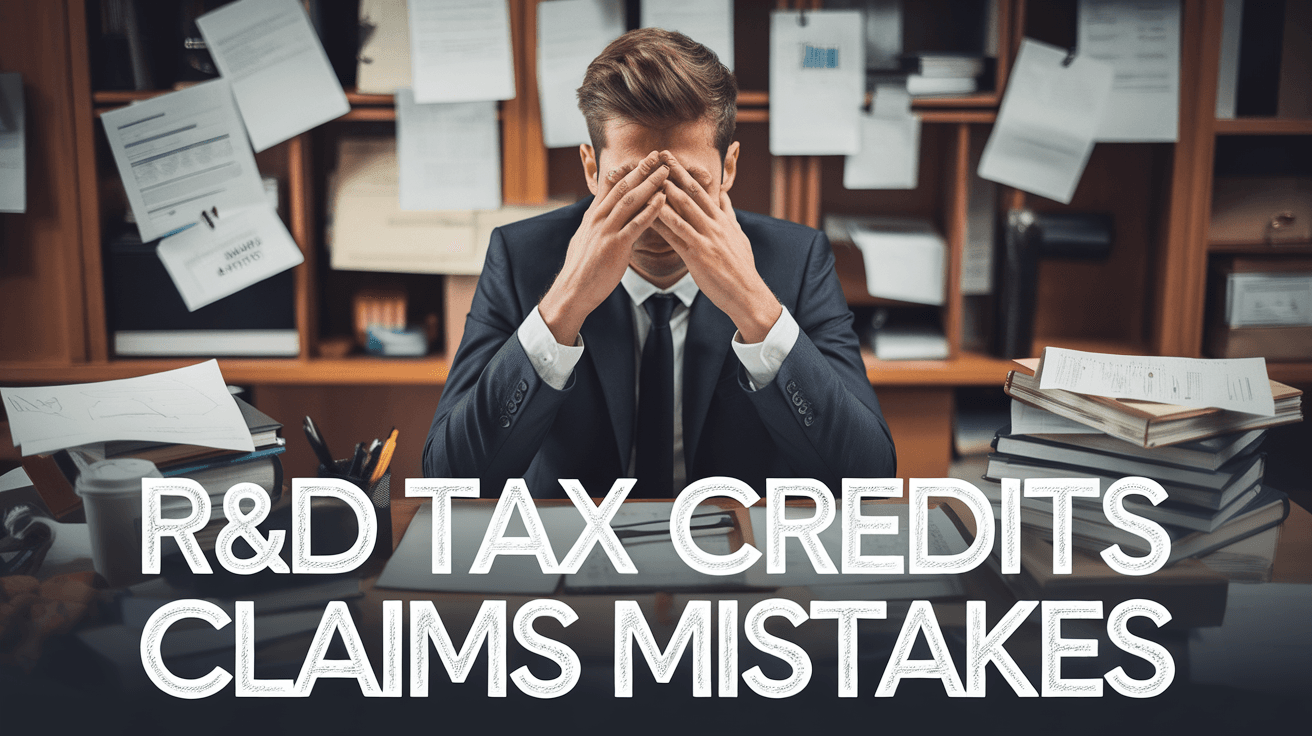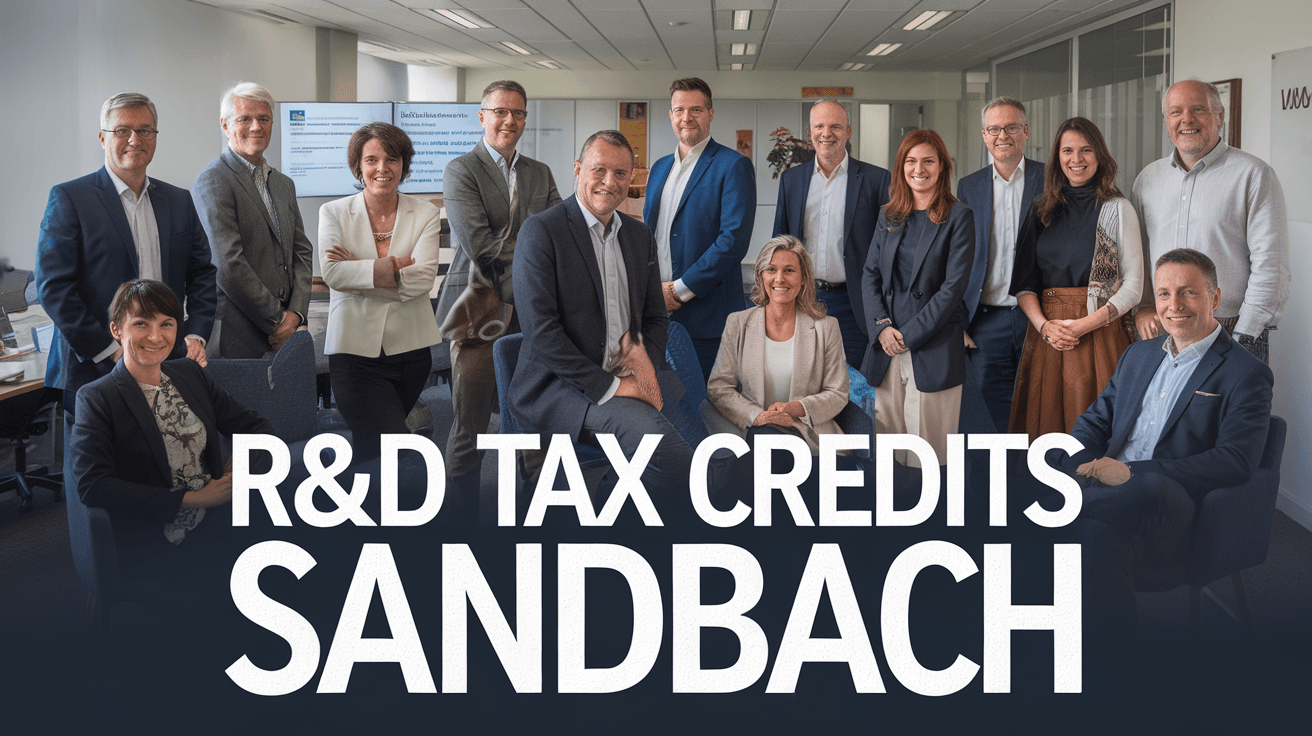R&D Tax Credits Sandbach Cheshire
R&D tax credits in Sandbach Cheshire offer financial incentives to businesses investing in research and development, helping to reduce your corporation tax bill or secure a tax refund. These credits are designed to support innovation and technological advancement, making it more financially viable for your business to explore new projects.
To qualify, your business must be based in the UK, undertake qualifying R&D activities, incur eligible costs, and not receive state aid. These criteria ensure that the financial benefits are directed towards genuine R&D efforts, fostering a culture of innovation in the region.
By leveraging the expertise of R&D Tax Credit Specialists, you can navigate the complex process of claiming R&D tax credits more effectively. They can help you identify eligible projects, maximise your claim value, and ensure compliance with HMRC regulations, ultimately enhancing your financial support and driving business growth.

How Do R&D Tax Credits Benefit Sandbach Businesses?
R&D tax credits provide significant financial benefits to Sandbach businesses. These incentives encourage innovation and growth by reducing your tax liabilities and increasing your cash flow.
Financial Advantages
R&D tax credits can substantially reduce your corporation tax bill, often by thousands of pounds. This financial support can be used to fund further research and development, hire new staff, or upgrade your equipment and facilities.
Competitive Edge in Innovation
By leveraging R&D tax credits, your business can stay ahead of the competition. The additional funds allow you to invest in cutting-edge technology and innovative projects that might otherwise be financially out of reach. This can lead to new products, services, and processes that set you apart in the market.
R&D tax credits are a powerful tool for driving growth and innovation in Sandbach. By taking advantage of these credits, you can secure the financial support needed to propel your business forward.

Which Industries Commonly Claim R&D Tax Credits?
Technology Sector, manufacturing, life sciences, and other industries can all claim R&D tax credits. Each sector has its own unique areas of innovation and development.
Technology Sector
The technology sector frequently claims R&D tax credits due to its focus on developing new software, hardware, and telecommunications solutions. Companies in this sector often invest heavily in research to create cutting-edge products and services.
Manufacturing
In the manufacturing industry, R&D tax credits are claimed for projects that improve production processes, develop new materials, or create innovative products. This sector is driven by the need to stay competitive through continuous innovation.
Life Sciences
The life sciences industry, including pharmaceuticals, biotechnology, and medical devices, is a significant claimant of R&D tax credits. Research in this sector often involves developing new treatments, drugs, and therapies to improve healthcare.
Others
Other industries, such as automotive, aerospace, and environmental technologies, also benefit from R&D tax credits. These sectors are characterised by their focus on advanced engineering and sustainable technologies.

What Qualifies as R&D Under UK Tax Law?
R&D activities under UK tax law primarily involve projects that aim to achieve an advance in science or technology. These projects must address uncertainties that cannot be easily resolved using existing knowledge or methods.
Qualifying Activities
Research and development includes activities such as developing new products, improving existing products, and creating new processes. These activities must involve a systematic investigation and experimentation to overcome scientific or technological uncertainties.
Excluded Activities
Certain activities are excluded from qualifying as R&D, such as routine testing and analysis, market research, and management studies. These activities do not involve overcoming scientific or technological uncertainties and therefore do not meet the criteria for R&D tax relief.

How Are R&D Tax Credits Calculated?
R&D tax credits are calculated by assessing the eligible R&D expenditure incurred by your company. The HMRC provides two main schemes for claiming these credits: the SME Scheme and the RDEC Scheme.
SME Scheme
Under the SME Scheme, you can claim a tax credit of up to 130% of your qualifying R&D expenditure. This scheme is designed for smaller companies with fewer than 500 employees and an annual turnover not exceeding €100 million or a balance sheet not exceeding €86 million.
RDEC Scheme
The RDEC Scheme is for larger companies or those that cannot meet the criteria for the SME Scheme. Under this scheme, you can claim a tax credit of 13% of your qualifying R&D expenditure. The RDEC is paid as a cash payment or as a reduction in your corporation tax liability.
Both schemes aim to incentivise investment in innovation and development, helping companies like yours to fund new projects and stay competitive in the market.

Recent Changes to UK R&D Tax Credits
The UK government has introduced several updates to the R&D tax credit system, which are designed to streamline the process and offer more support to innovative companies. These changes aim to make the process more accessible and beneficial for businesses of all sizes.
Policy Updates
- Simplified Claims Process: The HMRC has simplified the claim process to reduce administrative burdens on companies.
- Increased Rate for SMEs: The rate for Small and Medium-sized Enterprises (SMEs) has been increased to 13%, providing more financial support for R&D activities.
- Clarified Eligibility Criteria: The HMRC has provided clearer guidelines on what qualifies as R&D, helping companies better understand if their projects are eligible.
These updates are part of the government's efforts to foster innovation and support the growth of UK businesses through tax incentives.
Impact on Businesses
The changes to the R&D tax credit system have a significant impact on businesses. They not only reduce the complexity of claiming but also offer greater financial benefits, particularly for SMEs. This can encourage more companies to invest in R&D, driving innovation and economic growth.

How Can Sandbach Businesses Apply for R&D Tax Credits?
Sandbach businesses can apply for R&D Tax Credits by following a structured application process. This involves understanding the eligibility criteria and gathering the necessary documentation.
Application Process
- Determine Eligibility: Assess whether your project qualifies for R&D Tax Credits. Projects that involve scientific or technological advancements can be eligible.
- Register with HMRC: Register with Her Majesty's Revenue and Customs (HMRC) using the CT600 corporation tax form.
- Complete the Claim Form: Fill out the R&D Tax Credit claim form (CT600) and provide detailed information about your project.
- Submit Documentation: Submit all required documentation to support your claim, including financial records and project descriptions.
Required Documentation
- Financial Records: Provide detailed financial records that outline your R&D expenditure.
- Project Descriptions: Include detailed descriptions of your R&D activities, explaining the scientific or technological advancements.
- Supporting Evidence: Attach any additional evidence that supports your claim, such as technical reports or expert opinions.
Once you have gathered and submitted all the necessary documentation, HMRC will review your application. If approved, you will receive a tax credit that can help offset your R&D costs.

Common Pitfalls to Avoid When Claiming R&D Tax Credits
Claiming R&D tax credits can be a complex process, but avoiding common mistakes can make it smoother. Here’s what you need to watch out for:
Overclaiming
Overclaiming is a significant issue. It happens when you include costs that aren’t eligible for R&D tax credits. Ensure you only claim for activities and expenses that genuinely qualify to avoid scrutiny from HMRC.
Underclaiming
Underclaiming is equally problematic. It often occurs when you underestimate the scope of your R&D activities or overlook eligible costs. Double-check your claim to ensure you’re not missing out on potential benefits.
Documentation Errors
Documentation errors can invalidate your claim. Keep detailed records of all R&D activities, costs, and the rationale behind them. This will help you substantiate your claim if HMRC asks for more information.
By being aware of these common mistakes, you can make a more accurate and successful R&D tax credit claim.

How Can Professional Advice Enhance R&D Tax Credits Claims?
Professional advice can significantly boost the success of your R&D Tax Credits claims by ensuring you identify and claim all eligible expenses. Here’s how:
Role of Tax Credit Specialists
- Identifying Eligible Projects: Tax credit specialists can help you pinpoint which projects and activities qualify for R&D tax relief.
- Maximising Claim Value: They will ensure you capture all relevant costs, including staff wages, materials, and software expenses.
- Navigating Complex Regulations: Specialists are well-versed in the ever-changing tax laws and can guide you through the complexities of the HMRC guidelines.
- Avoiding Common Pitfalls: They can help you avoid common mistakes that could lead to claim rejections or delays.
By working with R&D Tax Credit Specialists, you can focus on your core business activities while we handle the intricate details of your claim.
Benefits of Expert Guidance
- Increased Accuracy: Expert guidance ensures your claim is accurate and comprehensive, reducing the risk of errors.
- Time Savings: You save valuable time that can be better spent on driving innovation and growth.
- Peace of Mind: Knowing that your claim is in capable hands allows you to operate with confidence and avoid stress.
In summary, leveraging the expertise of R&D Tax Credit Specialists can greatly improve the outcome of your R&D tax credit claims, ensuring you receive the maximum possible benefit.
In Conclusion
R&D tax credits in Sandbach Cheshire are designed to support businesses that invest in research and development, helping to reduce your corporation tax bill or even result in a tax refund. These credits are a vital financial incentive for companies across various sectors, including technology, manufacturing, and life sciences, to innovate and stay competitive.
By claiming R&D tax credits, your business can benefit from significant financial support, which can be reinvested in new projects, hiring staff, or upgrading facilities. This not only boosts your business's growth but also contributes to the broader economic development of Sandbach and the UK.
If you're looking to maximise the benefits of R&D tax credits, consider working with R&D Tax Credit Specialists. We can guide you through the application process, help you identify eligible projects, and ensure your claim is accurate and comprehensive. Contact us today to get started on securing the financial support your business deserves.

